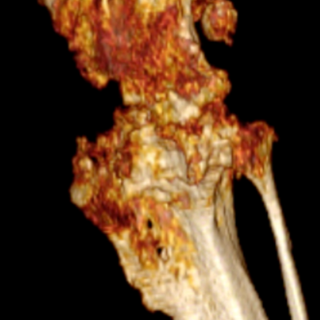Canine Osteoarthritis - is there anything we can do to help?
- Anna Richards ACPAT Vet Physio
- Jan 10, 2016
- 2 min read
As with humans wear and tear can lead to joint degeneration and osteoarthritis. Some dogs may also be more prone to issues if they have elbow or hip dysplasia. With discomfort your dog becomes reluctant to move, change how they move to off-load painful joints and so their muscles become weaker. This leads so less joint stability (as muscles help with this) which worsens the problem and so it continues.
You may gradually notice your dog be more reluctant to go on walks, become more subdued or even become aggressive when you stroke the area or with other dogs. There are things that be done to halt to progression of the disease and reduce symptoms.
Physiotherapy aims to:
Reduce pain
Reduce inflammation
Maintain/improve strength
Optimise normal movement
Reduce compensatory issues
Treatment Options:
Pain – mobilisations to the joint and surrounding tissues have been shown to block pain and release endorphins, and also increase blood flow and reduce inflammation. Soft tissue techniques including massage can relieve spasm and loosen tightened structures. Exercises can also be used with a gradual, graded approach to allowing movement to be more comfortable.
Low level laser therapy and pulsed magnetic energy therapy can slow down pain signals, reduce any muscle knots, help with inflammation and has also been shown to improve cartilage structure.
Strengthening exercises – by improving muscle strength around a joint there will be improved stability which results in less pain and better movement. Muscles stop working when pain is present so physio exercises are required to encourage your dog to load to affected limb again, along with core stability exercises and graded walks.
Hydrotherapy in an underwater treadmill or pool can help by allowing your dog to exercise in a weight-free environment to give them more freedom and ease of movement. Warm water and hydrostatic pressure can also help relieve pain.
Other simple measures such as placing rugs on the floor to prevent slipping which can further irritate joints and make standing up/moving less effortful and keeping where you dog sleeps/rests warm (especially when the weather is cold and there are extremes of temperatures) with a comfortable pressure relieving bed can help. Joint supplements and alterations to diet can also be of benefit – and weight control!
Physio is commonly prescribed in the NHS for people with arthritis and has been proven to help through studies and trials. The same approach should be used for dogs to make sure they are as comfortable and have the best quality of life possible.






















Comments